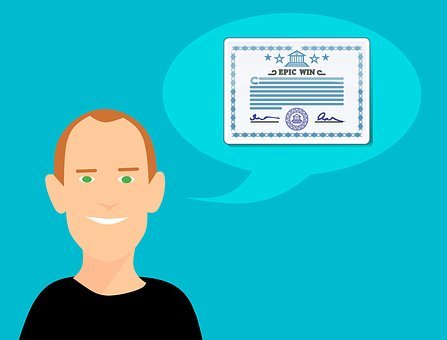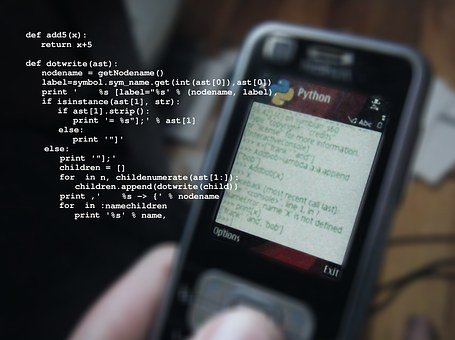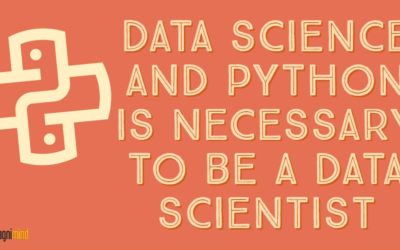Python is an extremely popular programming language that can be used to perform a plethora of tasks. From building machine learning algorithms to websites and almost anything in-between – you can do them all with it. This high-level programming language is also dominating other languages when it comes to AI (Artificial Intelligence). In addition, python comes with an array of libraries and tools that help data scientists to explore large datasets. As a result, in the entire programming domain, Python certification has become one of the most sought after skills. Let’s have a look at some statistics.
- In 2018, Python came out on top in the Programming language Hall of Fame of TIOBE.
- In 2018, Python occupied the top position, as revealed by a survey conducted by IEEE on the best programming languages.
Having a Python certification gives you a clear advantage when the employers look at your resume. It’s a proof to the employers that you have the necessary expertise to fulfill certain duties. It’s also a sign for them that you’re willing to expand your knowledge.
As professionals with Python certification are able to contribute to a business’s productivity, efficiency, and profit-making capacity directly, they’re considered as great assets for any organization. Once you’ve earned this certification, you’ll also be able to move onto a more rewarding and higher paying job than what you’re doing now.
The key thing is to enjoy the competitive advantage of having a Python certification, but you’ve to learn it at first. In this post, we’re going to discuss the seven steps that are crucial to make yourself prepared for earning a Python certification.
Surely, there’re some good schools like Magnimind Academy that offer excellent Python certification course content designed by industry professionals to help you get the best jobs. But it would always help to have a robust understanding of the initial steps to complete the Python certification training successfully and easily. Just as in learning new skills, exploring a Big Bamboo demo slot can be a great way to understand game mechanics before investing real money—providing a risk-free environment to build familiarity, much like practice modules in a coding course.
Different approaches to get a Python certification

There’re two different methods you can use to get a Python certification. Here’re the most popular ones among them.
Online approach

When it comes to Python certification, doing a good course from a reputed online school would probably be your best bet. There’re several online courses that can help you master this programming language.
From courses designed for beginners to courses that suit the needs of professionals – you can take your pick according to your preferences and requirements. Once you’ve earned a Python certification, these schools also help you scale up to more advanced courses like courses on data science, machine learning courses etc.
Offline Approach

There’re some schools that help you earn a Python certification in a traditional environment. But this avenue takes significantly more time and usually a good chunk of money compared to online schools. So, if you cannot afford either of those, the online approach is what you should opt for.
How to prepare yourself to earn a Python certification with 7 simple steps

Learning and becoming a master in any programming language can seem quite intimidating and Python is no different. It’s always recommended to get a solid understanding of the building blocks before you enroll with a school to earn a Python certification. Let’s have a look at these seven steps.
Step 1 : The Beginning

Assuming you’re an absolute beginner, this is the first step toward earning a Python certification. By absolute beginner, we mean someone who doesn’t have any knowledge about any programming language. At this step, a majority of the concepts that you’ll be learning are programming concepts in general. It means that these concepts aren’t actually exclusive to Python but are applicable for other programming languages also.
It’s important to note that many programming languages bear similarity to a good extent and learning what’s common between them will not only help you learn Python relatively easier but will even facilitate your future transitions into different programming languages. Some of these basic concepts include data types, variables, functions, operations, loops, and conditionals, among others.
Step 2 : Figuring out the motivational factor
Before you start your journey to earn a Python certification, it’s worth figuring out why you actually want to learn Python. This is important because sometimes, the journey becomes difficult and without enough motivation, you may not make it through.
In this step, you should figure out a general area you’re interested to work in after finishing the Python certification. These areas may include data science, websites, mobile apps, games, scripts to automate your tasks etc. Pick one or multiple areas that interest you and you’ll be directing your learning toward them.
Step 3 : Understanding the basic syntax
Learning the basics of Python syntax is a must before you move forward to earn a Python certification. There’re some good resources that can help you learn these basics. For example, Magnimind Academy does an excellent job of teaching basic syntax and moving forward from there. Though the learning process may not seem very motivating, enrolling with a good school can help you sail through it.
Step 4 : Making projects

Once you’ve got a solid understanding of the basic syntax, you can start making projects independently. Projects offer an excellent way to learn as they let you apply the knowledge you’ve gained. Projects will help you learn new things, push your capabilities, and help you develop your portfolio.
It’s important to note that at this step, you’ll get stuck frequently. So, be prepared to turn to your Python certification program instructors a lot. Some schools allow you to do structured projects that let you develop interesting things in your preferred areas without getting stuck. If you’re doing the Python certification to step into the field of data science, try to do some structured projects in that area. When it comes to resources, try to find out a school like Magnimind Academy, for example, that lets you learn Python and data science interactively.
Step 5 : Diving Deeper

Once you’ve some completed structured projects under your belt, it’s time to move further ahead. With a good school as your Python certification program resource, you should be able to feel comfortable in handling problems and errors with your programs. Here again, you should work on areas that interest you.
At this level, apart from seeking help from your Python certification program instructors, you should consult various Python communities and websites that have good reference materials on the language. You can also try to visit Python meetups and find professionals who’re working on different interesting projects. One important thing to remember is that you should start small to gain confidence. See if the school, where you’re doing the Python certification program from, offers guided projects that let you perform small data science-related tasks.
Step 6 : Time to do something harder

Once you’ve gained complete confidence on what you’re developing, it’s time to increase the scope and difficulty of your projects. Some tips to increase your competence level include trying to make the program run faster, make the tool useful for more people, scale up the tool, and guide a beginner on how to develop a project that you’ve made earlier, among others.
Step 7 : Learning advanced python

If venturing into the world of Python confidently and taking your skills to the next level is two of your key goals, you should try to learn the advanced aspects of the concepts you’ve already learned until now. However, you should remember that this step assumes that you’ve a robust understanding of the basics of the language. In addition to this, you’ll also learn some new concepts like Metaprogramming, Control Flow, and Higher-order Functions, among others.
These are the fundamental steps to earn a Python certification. Let’s have a look at why organizations keep looking for professionals with Python certification.
The importance of Python certification to businesses

Certified Python professionals bring a huge amount of value to a business and that’s why a majority of organizations keep encouraging their employees to undergo Python certification courses.
Employees with Python certifications are not only considered to have achieved the recognized benchmark for a business skills framework, but also ensure that teams working on different projects are trained to leverage such skills to the fullest for optimum results. It’s, therefore, in the best interests of an organization to help their employees pursue Python certification programs.
Such an approach leads to faster development of their employees’ programming skills that translates into streamlined processes directly, as well as help develop best practices and higher standards in the organization. Put simply, professionals with Python certifications not only help an organization to earn more, but also add to its reputation.
Final thoughts

You should always remember that earning a Python certification doesn’t put an end to learning. Instead, you should consider it as the beginning. The world of Python is evolving constantly. So, you’ll need to learn and work on projects constantly. Working on the things that truly interest you means you’ll never get bored or burned out.
Python is really a rewarding and fun language to learn, and you can surely achieve a great level of competency with the help of a good institution. Finally, regardless of the level you’re at right now, get ready to put in the requisite effort to earn your Python certification.
To learn more about Python, click here and read our another article.





